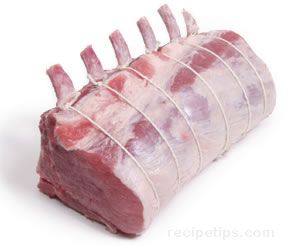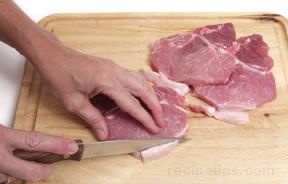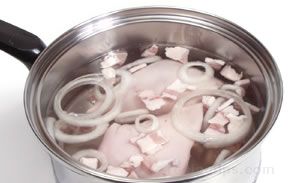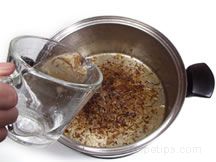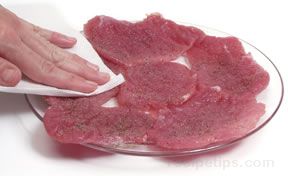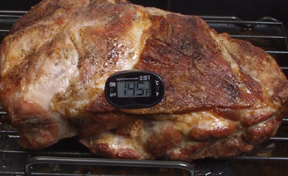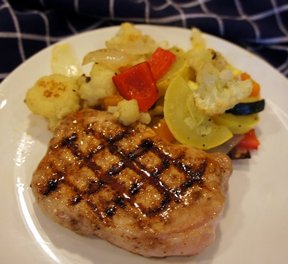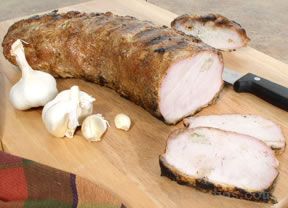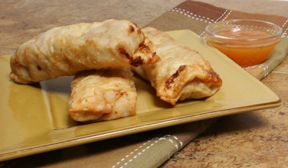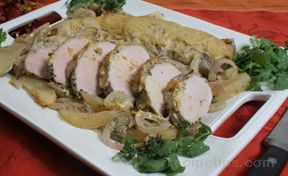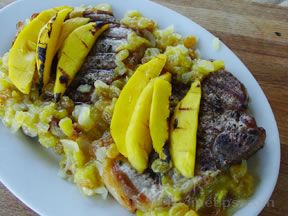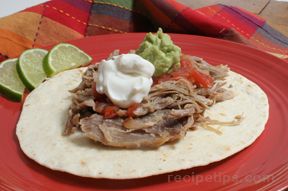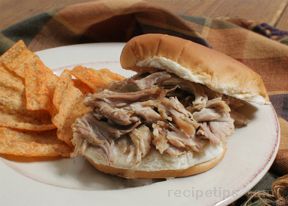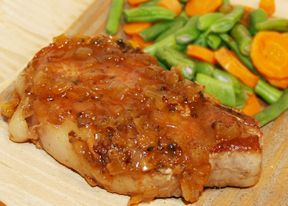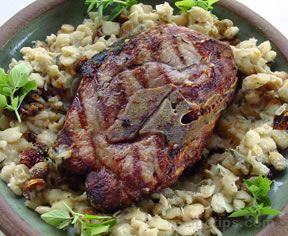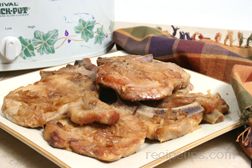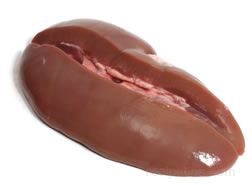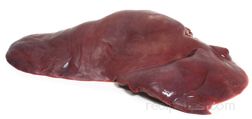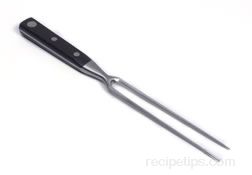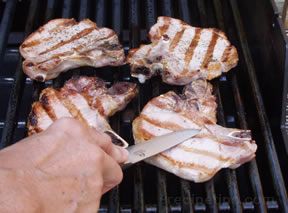|
The larger pork cuts will need to be carved into smaller pieces for serving. Before carving, the meat should stand for 10 to 15 minutes after it is removed from the heat source. This allows the juices to be redistributed throughout the meat, resulting in a firmer, juicier and easier to carve cut of pork. Choose a carving knife that is long enough to cut the entire length of the cut. It is important that the knife be extremely sharp so that it will allow thin slices to be carved and make carving easier. Shown below are the steps to carving several different cuts.
Pork Roasts:
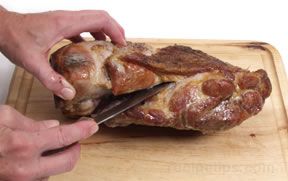
|
- Place the roast on a cutting board and determining where the different muscle sections and their grain direction are located.
|
- Separate each muscle section from the roast using a sharp knife.
|
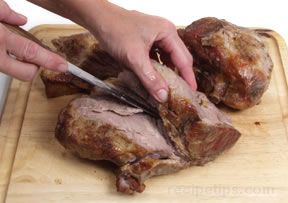
|

|
- Slice each muscle section by holding it steady with a carving fork or hold in place by hand, making sure your fingers are curved away from the cutting edge. Cut slices from each section across the grain into desired thickness. Place the slices on a platter and serve as soon as the entire roast has been carved.
|
Rolled Roasts:
- Place the roast with the flat meat side down so that it is standing vertically on a cutting board.
- Hold roast steady with a carving fork, start at the top and make horizontal cuts across the grain of the roast, cutting slices ¼ to 3/8 inch thick. Remove the strings from the roasts as you come to them when you are carving. If the roast is too tall to slice horizontally, place it with the string side down on the board and cut vertically across the grain of the roast.
Pork Loin Rib Roasts:
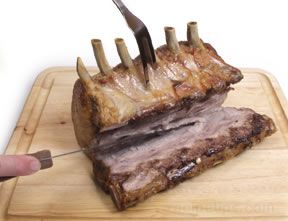
|
- Place the roast on a cutting board and remove the backbone using a sharp knife. Cut off the least amount of meat possible with the backbone, leaving as much meat as you can on the roast.
|
- Place the roast up on the end where the backbone was trimmed off. Hold the roast steady with a carving fork and then cut down between the rib bones with the knife running along one side of the bone. This will result in chop size pieces, each containing a rib bone.
|
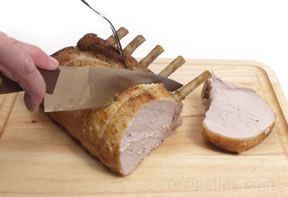
|

|
- For smaller serving size pieces, cut close, along each side of the rib bones. This will result in thinner slices where only every other slice contains a bone.
|
Crown Roasts:
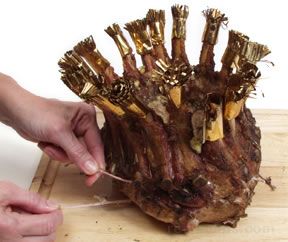
|
- Place the roast on a cutting board and remove the strings used for holding the roast together during the roasting period.
|
- Hold the roast in place with a carving fork and using a sharp knife, slice down between the ribs bones.
|
 |
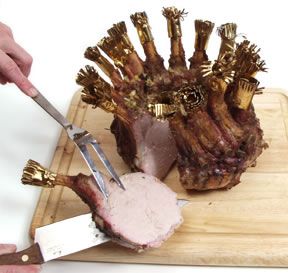
|
- Remove each rib with meat attached and place on a meat platter.
|
- OR, if carving at the table, place on the carving platter after removing the string. At the table, use a meat fork to steady the roast and slice down between the ribs to remove a rib with meat and place one on each individual's dinner plate.
|
Ham Carving:
For information on carving ham, see Ham Cooking Guide - Carving Ham.
|














